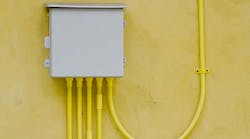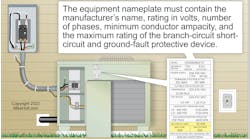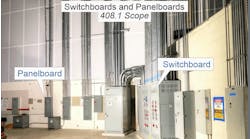What about installing lighting equipment outdoors? You can find these requirements in Sec. 225.7 of the NEC. The first requirement is that the branch circuits must comply with Art. 210, which covers branch circuits [225.7(A)]. The additional requirements these must meet are in Sec. 225.7(B) through (D).
B) Determine the maximum net calculated load current between the neutral conductor and all ungrounded conductors connected to any phase of the circuit. This value is the minimum ampacity of the common neutral.
C) To supply luminaires for outdoor areas of industrial, commercial, or public buildings, the circuits cannot exceed 120V (nominal) between conductors or 277V (nominal) to ground.
D) If you’re supplying the auxiliary equipment of electric-discharge lamps, the circuits are allowed to exceed 277V but not 600V to ground.
What about neon signs? Don’t those operate at higher voltages than permitted here? Yes, they do. But the branch circuits supplying them don’t. Neon and other types of electric signs are covered in Art. 600.
Note that a common problem with outdoor lighting is voltage drop. When determining the necessary conductor size, don’t stop with the ampacity table value.



